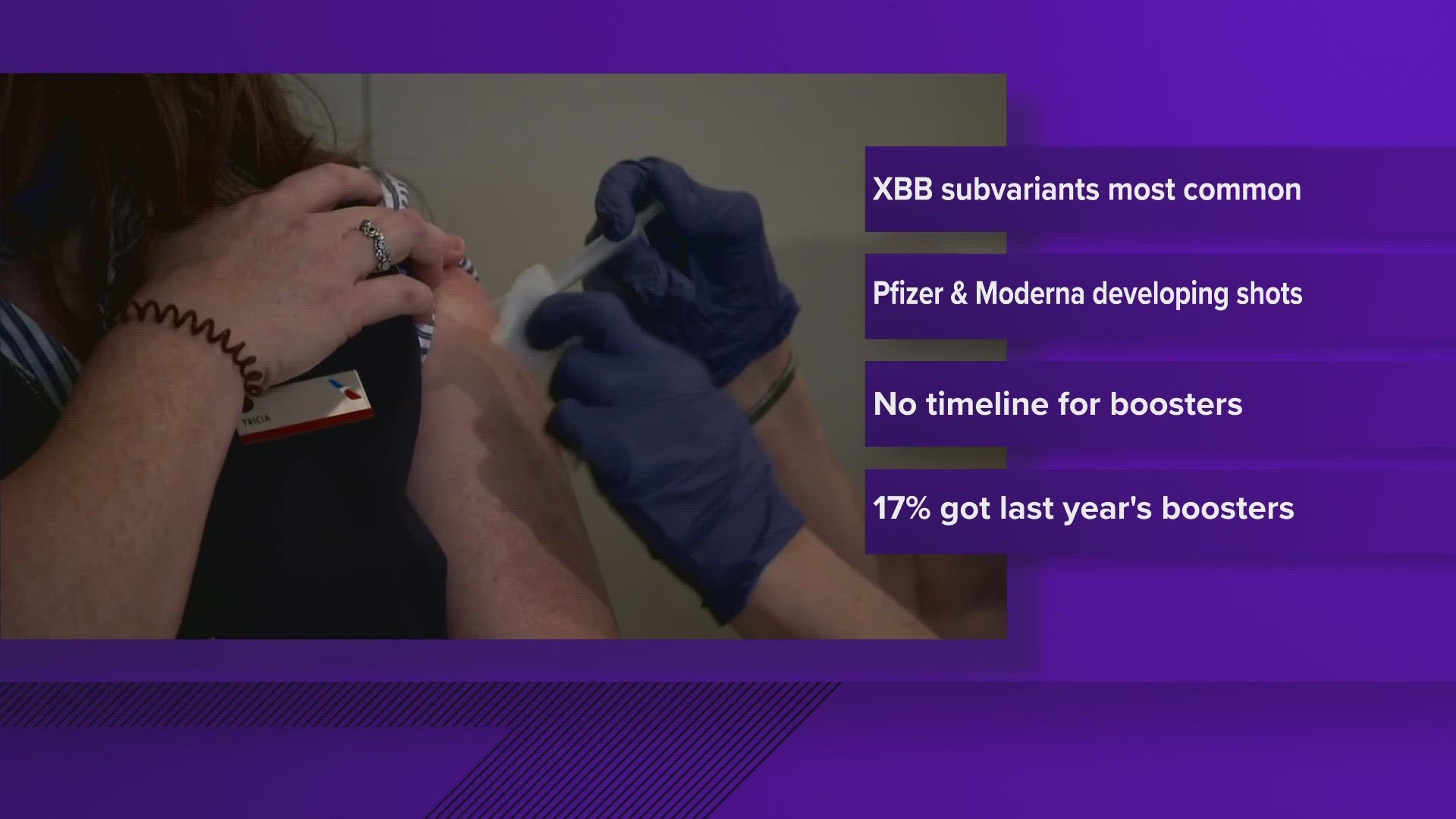WASHINGTON — The next round of COVID-19 vaccines will target one of the latest versions of the coronavirus, the Food and Drug Administration said Friday.
FDA's decision came one day after an agency panel of outside advisers supported the recipe change. The agency told vaccine makers to provide protection against just one omicron strain, known as XBB.1.5.
Today's shots include the original coronavirus and an earlier version of omicron. They do still help prevent severe disease and death even as XBB variants have taken over. But protection gradually wanes over time and was short-lived against milder infection even before the virus, inevitably, evolved again.
The three U.S. companies that make COVID-19 shots said this week they had geared up to make the formula change, in anticipation of making many millions of doses available for the fall. One company, Pfizer, said it could have at least some doses ready as early as next month.
The Centers for Disease Control and Prevention will eventually decide whether to recommend the shot for nearly all Americans or just for certain high-risk groups.
Here are some things to know:
WHY ANOTHER ROUND OF SHOTS?
The FDA had told Americans to expect an updated fall vaccine against COVID-19, just like they get a new flu shot every fall. Even though most of the population has either been infected or had at least one round of vaccinations, the coronavirus keeps churning out new varieties.
What’s in use in the U.S. now are combination shots from Pfizer and Moderna that mix the original strain with protection against last year’s most common omicron variants, called BA.4 and BA.5. But just 17% of Americans rolled up their sleeves for a combo booster.
And while the FDA did allow seniors and others at high risk to get an extra booster dose this spring, most people will be many months beyond their last shot by fall.
Those currently available shots do still help prevent severe disease and death even as XBB variants have taken over. But protection gradually wanes over time and was short-lived against milder infection even before the virus, inevitably, evolved again.
“We need a better vaccine. We should be updating it,” said one adviser, Dr. Eric Rubin, an infectious disease doctor at Brigham and Women’s Hospital in Boston.
SHARPENING PROTECTION
Last year when regulators were struggling to decide how to update the vaccine, a combo shot seemed like the safest bet. Omicron was pretty new, and there was no way to know how long it would stick around or if the next big coronavirus change would more resemble the original strain.
Keeping the original strain in the shot actually has a downside called “imprinting.” After repeated exposure to the original strain, people’s immune systems tended to recognize and respond more strongly to it than to the half of the new booster dose that was brand new.
The FDA agreed that the fall shot should just target XBB variants. The World Health Organization’s vaccine advisers and European regulators recently made similar recommendations.
PREDICTING WHAT WILL HIT THIS WINTER
Another challenge: Deciding which XBB variant to target — since what’s spreading now likely will have mutated again by winter.
Regulators will be making their best guess, just like they do every year in setting the recipe for the fall flu vaccine.
The FDA has identified three XBB subtypes as the top strain choices. Vaccine makers already have been developing XBB-targeted formulas. At the meeting Thursday, there was a consensus that this fall’s vaccine target variant XBB.1.5, the most common version infecting people in recent months.
HOW MANY MORE SHOTS?
Older adults and others at high risk because of seriously weak immune systems continue to have the highest rates of hospitalization from COVID-19 even as cases have declined. One question is whether they’ll be urged to get a single fall shot or be eligible for more than one.
Another is how many doses the youngest children who’ve never been vaccinated would need.
Ultimately, the Centers for Disease Control and Prevention will make the final recommendations on who should get the updated shot and when.

